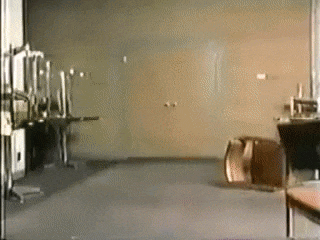Sure it did.Sony/Columbia never kept their masters (TV on home video didn't exist back in the 80's and 90's).
 I taped everything I could from 1984 onward, starting with V, Star Trek and IDOJ on a couple of channels. We all know Star Trek started being released on VHS in the mid 80's. By the 90's, I Dream of Jeannie was on official VHS through Columbia House and a couple of standalone releases. I still have my CH tapes.
I taped everything I could from 1984 onward, starting with V, Star Trek and IDOJ on a couple of channels. We all know Star Trek started being released on VHS in the mid 80's. By the 90's, I Dream of Jeannie was on official VHS through Columbia House and a couple of standalone releases. I still have my CH tapes. Until then, the syndicated prints of IDOJ still had subtitles over Jeannie's pre-English speaking scenes in the pilot episode. Some sound effects and music cues in the second season were changed by the early 2000's if not sooner.
Other than that, the IDOJ episodes on DVD are uncut for the most part, although the opening credits don't match the color seasons for seasons 2 and 3. They look fine, so if those are syndication prints, they are complete, story wise, and look great. I have about 10 episodes from the first season on 16mm and other than sponsor and network bumpers (and Lark cigarette packs in the end credits of a couple), the episodes have the same content and run the same length.
If Sony destroyed the original prints, it was probably in the last 20 years. The originals were in circulation for a couple of decades.
I Still Dream of Jeannie, much like its predecessor, isn't worth much preservation. Both were awful (the first reunion ended on a horribly depressing note) and I'm totally fine to never speak of them again.They made the DVDs from their syndication copies (it also explains why I Dream of Jeannie: Fifteen Years Later is available on DVD while I Still Dream of Jeannie is not)

The info I got was that the budget for Space: 1999 was reallocated to pay for Raise the Titanic, which began production in 1977 (and stalling a few times before filming began in 1979), with money used to build models and a tank. However, I have also read reports that refuted this.I was referring to Lew Grade deciding to spend his money making Raise the Titanic instead of Space: 1999 Year 3, which is what I've read from the very reliable @Ssosmcin.

 )
)
 )
)